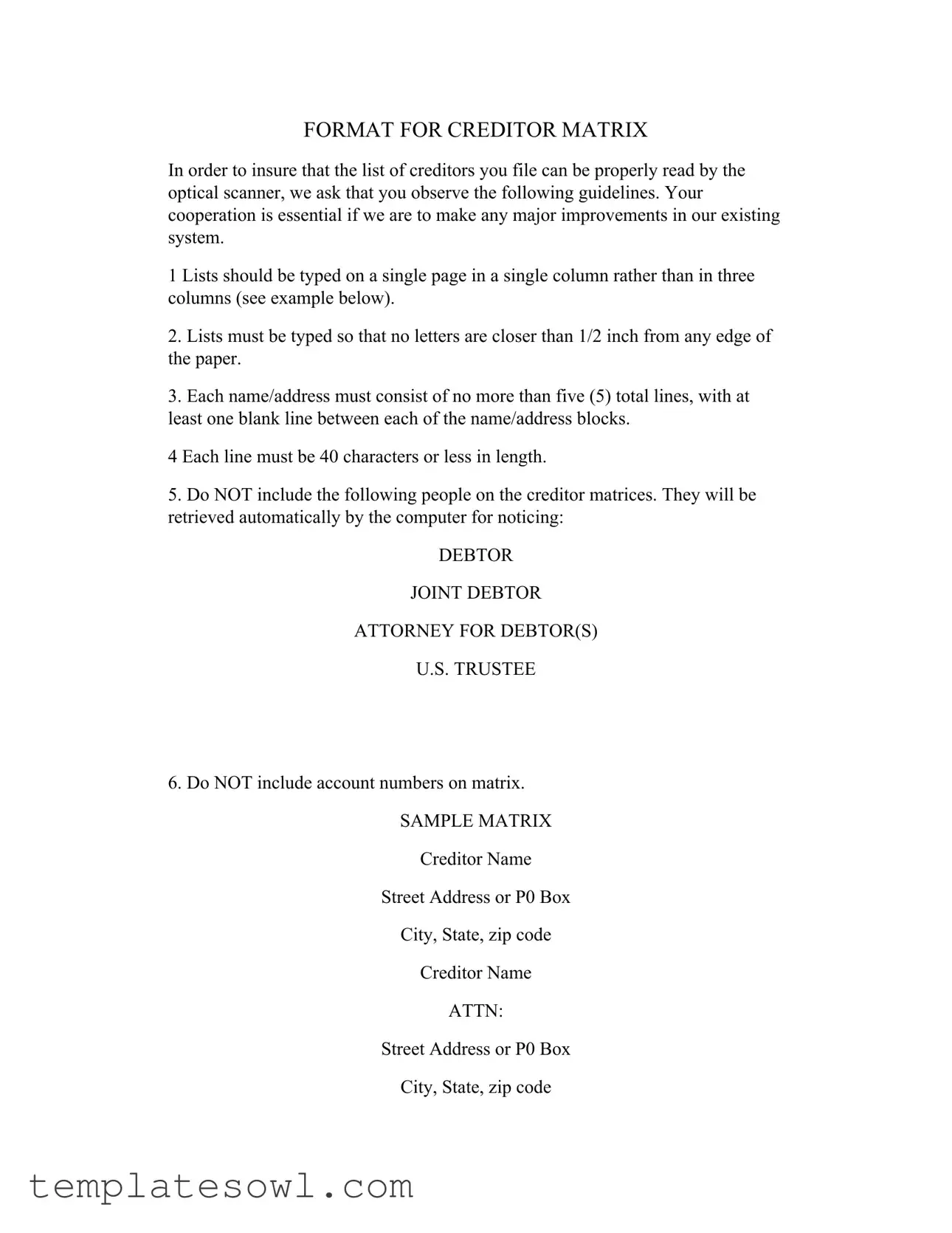FORMAT FOR CREDITOR MATRIX
In order to insure that the list of creditors you file can be properly read by the optical scanner, we ask that you observe the following guidelines. Your cooperation is essential if we are to make any major improvements in our existing system.
1 Lists should be typed on a single page in a single column rather than in three columns (see example below).
2.Lists must be typed so that no letters are closer than 1/2 inch from any edge of the paper.
3.Each name/address must consist of no more than five (5) total lines, with at least one blank line between each of the name/address blocks.
4 Each line must be 40 characters or less in length.
5.Do NOT include the following people on the creditor matrices. They will be retrieved automatically by the computer for noticing:
DEBTOR
JOINT DEBTOR
ATTORNEY FOR DEBTOR(S)
U.S. TRUSTEE
6.Do NOT include account numbers on matrix.
SAMPLE MATRIX
Creditor Name
Street Address or P0 Box
City, State, zip code
Creditor Name
ATTN:
Street Address or P0 Box
City, State, zip code
UNITED STATES BANKRUPTCY COURT
DISTRICT OF NEW HAMPSHIRE
THINGS TO AVOID ON CREDITOR MATRIX
Although the court is using sophisticated equipment and software to insure accuracy in creditor list reading, certain problems still occur. By following these guidelines, the court will avoid delays or additional effort in mailing notices.
The following problems can prevent your lists from being read by the optical scanner, requiring you to re-submit your creditor list in an acceptable form.
AVOID:
1.Extra marks on the list - such as letterhead, dates, debtor names, coffee stains, handwritten marks.
2.Non-standard paper such as onion skin, half-sized paper, or colored paper. Use
8 1/2 x 11 standard paper.
3.Poor quality type caused by submitting a photocopy or carbon.
4.Stray marks should be avoided. Do not type lines, debtor names, page numbers, or anything else on the front of the creditor list Any identifying marks you choose to add can be typed on the back of the list.
5.Upper case only (all capital letters) should be avoided. Type in upper and lower case as you would on a letter.
6.Zip code must be on the last line. Nine digit zip code should be typed with a hyphen separating the two groups of digits. Do NOT type attention lines or account numbers on the last line. If you must use an attention line, it should be the second line of the name/address. (The zip code must be at the end for the zip code sorting equipment to find it.)
